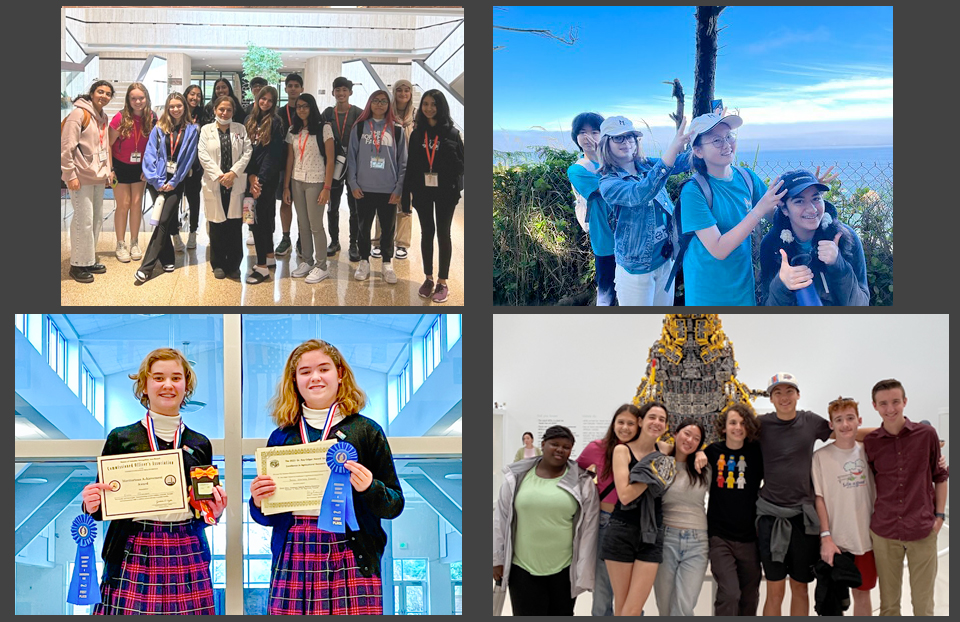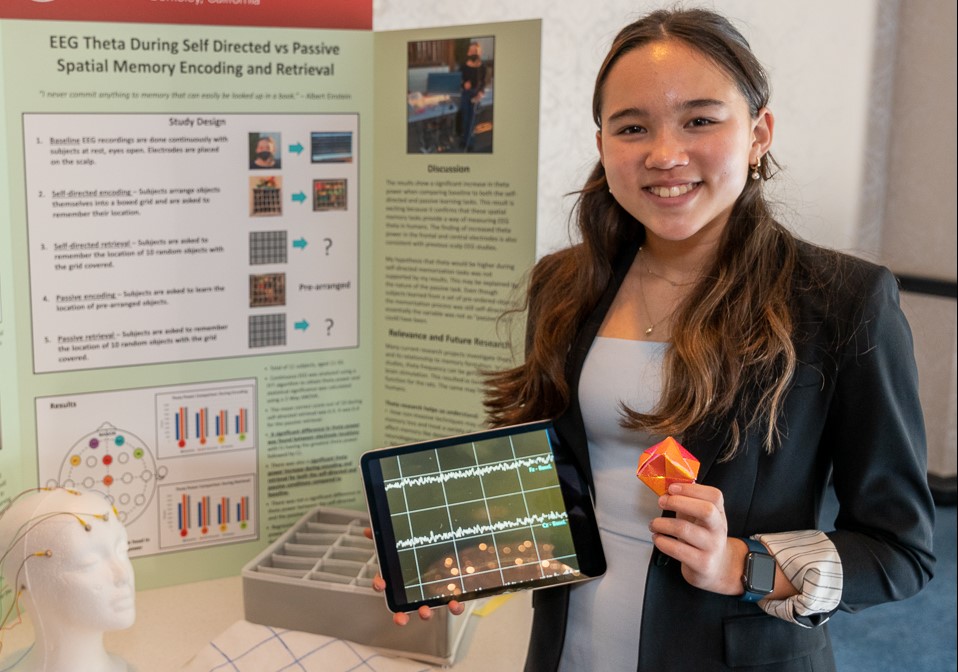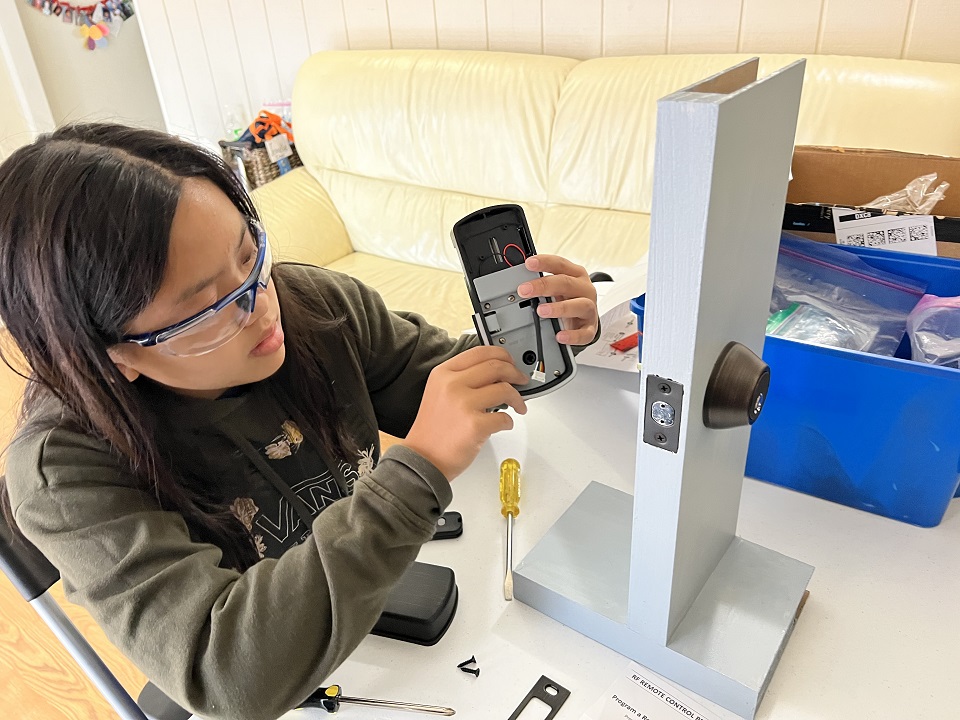Into the desert they go: Exploring the gardens, museums and science in Arizona
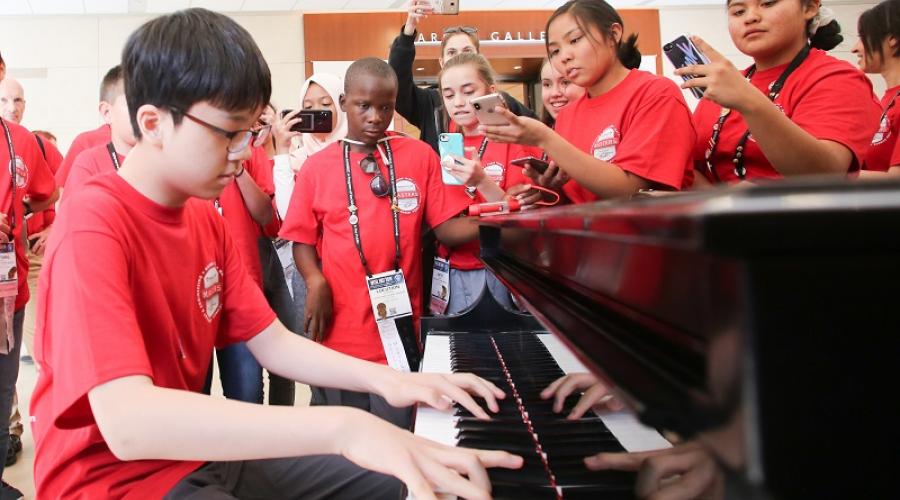
The Sonoran Desert is full of wonder, mystery and awe.
For all but two of the Broadcom MASTERS International delegates, its sprawling landscape, hot and arid climate and indigenous inhabitants were unknowns. The delegates’ busy itinerary, steeped in STEM activities and learning the history and culture of the desert southwest, began with a tour of the Tempe campus of Arizona State University (ASU), the nation’s largest public university by enrollment. The Center for Meteorite Studies, home to more than 30,000 specimens, was a special highlight for delegate, Yu-Tang “Bill” Shen, of Taichung, Taiwan. Only the Smithsonian Institute in Washington, D.C., has a larger collection of meteorites.
“My favorite was ASU because we saw the replica of the Mars Rover,” the 14-year-old said. “I like things about space and one of my favorite movies is The Martian.”
The delegates learned about planetary missions carried out by rovers Curiosity, Spirit and Opportunity, which all far outlasted their projected life spans on Mars, and the key role ASU played in their success. They met with ASU professors and researchers throughout the day, including Ken Mossman, who’s spent more than 20 years at the bench, analyzing composites and materials for academic research and commercial purposes. His career began as a chemistry major at ASU before landing a job in research. “I thoroughly enjoyed it and never left,” the scientist said of his beloved lab work.
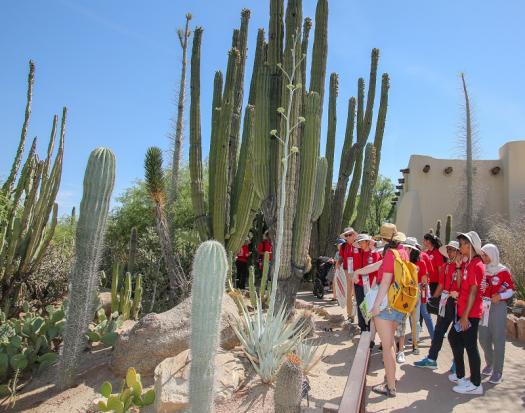
The day concluded with a lecture on electricity and a lab activity wherein delegates monitored electrical signals from their biceps and other muscles by attaching sensors to a battery powered device that turned muscle signals into sounds. “I was really excited going to ASU, where I learned a lot about space and the Earth,” said 12-year-old Leena Almusaed, of Dammam, Saudi Arabia.
Sunny skies boosted morning temperatures into the 90s on the second day, ideal conditions to showcase a rare flower bloom at Desert Botanical Garden, which received more rainfall last winter than in previous years. The 50-acre property at the foothills of the towering red buttes of Papago Park, which link Phoenix, Scottsdale and Tempe, is home to one of the world’s largest and most pristine collections of desert plants, including 400 rare and endangered species. The delegates learned about its most iconic resident, the Saguaro cactus, the state wildflower of Arizona that can live for 200 years. Its outstretched, welcoming arms greet visitors to one of the few locations in the world where they grow.
Other notable exhibits included the most prominent agave collection in the U.S. and perhaps the world, as well as several other varieties of cacti, aloe and other flora of the Sonoran Desert. Delegates had the opportunity to examine cultural and housing examples of the nearby Tohono O’odham and Western Apache tribes, and Hispanic families who have lived in the Valley of the Sun for centuries.
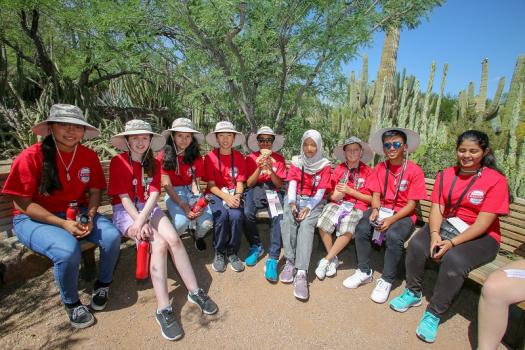
“I enjoyed the Botanical Garden because we were able to see lots of diversity,” said Jaycelyn Tallsalt, a delegate who resides in the Navajo Nation in Northern Arizona. “Phoenix is my backyard, but I’m from Tuba City, so I don’t get to see all the different types of cacti. It was interesting to see how many different types there were.” Delegates watched cactus water retention demonstrations and then were tasked with developing their own water barrel assembled from items such as tape, plastic bottles, siphons and connectors. The goal of this project and theme of the tour was biomimicry, or the design and production of materials, structures, and systems modeled after biological entities and processes.
The next stop took the delegates out of the heat and into the cool exhibit space of the Heard Museum, established in 1929, to showcase traditional and contemporary American Indian art. Upon entering the signature gallery, Home: Native People of the Southwest, the delegates encountered the 30-foot Art Fence, a collaborative work of vibrantly-colored blown glass and ceramics. The exhibit gave way to rows upon rows of encased Hopi Katsina dolls, given to Hopi girls in infancy to help them learn about the responsibilities of women in the community. Other displays included a full-size Navajo Hogan dwelling, jewelry, pottery, baskets, textiles, beadwork and other cultural objects and artifacts.
The next morning, after students discussed their favorite innovator from their home country, the delegation travelled to Taliesin West in Scottsdale for a tour of the winter home of noted American architect Frank Lloyd Wright, who lived and worked there with various artists from 1937 until his death in 1959. The national historic landmark, set in the desert foothills of the McDowell Mountains, was handcrafted over decades, reflecting the desert landscape surrounding it. “I’m quite interested in architecture so I liked going to the architect’s house and seeing what it was like and understand how it developed over the years,” said Liam Black, whose participation in Broadcom MASTERS International marked his first trip to the states from Northern Ireland.
Black and the other delegates took a tour of the 620-acre property, which included exploring a home built with the ancient method of rammed earth by ASU graduate architecture student Conor Denison, who lived in the structure for two months as part of his thesis project.
The working lab Wright envisioned nearly eighty years ago lives on today as the main campus of ASU’s Frank Lloyd Wright School of Architecture. Education Coordinator at the Frank Lloyd Wright Foundation, Christopher Jason, led a discussion on key elements required to build structurally-sound housing in diverse environments throughout the U.S. and then set up an activity for the students to build model homes with that in mind. The models, set in the coastal West, desert Southwest, Great Plains, urban Midwest and East Coast, were then tested to withstand winds, moisture and the sun’s rays.
The next stop at the Musical Instrument Museum in northeast Phoenix was a highlight for several delegates, including Locution Wonder, Zimbabwe’s first international delegate. The museum, better known as MIM, is outfitted with interactive displays that allow visitors to hear the sounds of several instruments.
“It had beautiful music,” Locution said of the museum, which features more than 6,500 instruments collected from 200 countries and territories.
In the Experience Gallery, delegates strummed Peruvian harps, while others played the West African djembe, and other types of communal drums, some used by Native American Indians in the region. Thirteen-year-old South Korean delegate SangYoon Lee stole the show with an impromptu performance on a Steinwick piano on the first floor concourse, drawing applause from his fellow delegates and passersby. MIM topped the charts for Israeli delegate Jessica Shoham, an avid singer and dancer who plays the flute and guitar, and has ambitions to pick up the ukulele.
